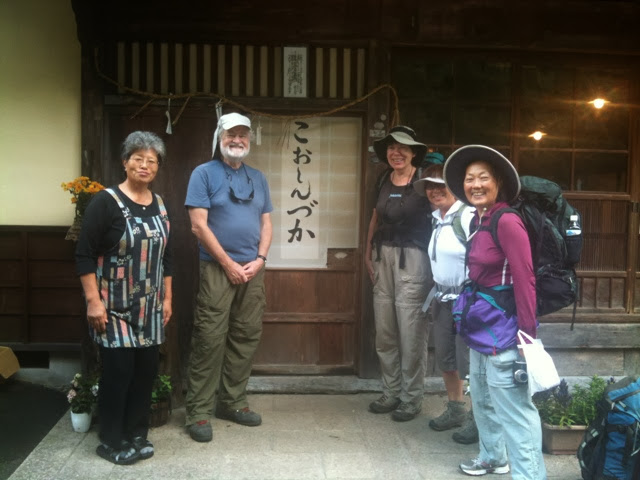After a truly magical stay at Koshinzuka minshuku, we started off for our last day of hiking the Nakasendo. But not before breakfast in front of the fire pit.
I had to ask our host about this photo framed on the wall:
This portion of the Nakasendo, from Tsumago to Mangome, is the most popular, and we met lots of other hikers on the trail. It was actually a bit jarring to run into so many Americans again. But the scenery was beautiful, and even with stopping frequently to take pictures, we were in Mangome at 1:30.
We shortly encountered two waterfalls. I'll let you guess which is the 'female' and which is the 'male'.
Just before reaching Magome Pass, we came to this rest house, where we were served tea and sliced persimmon. And who should we run into but our trail friend who was hiking the Nakesendo for the second time.
Will finish post tonight, so come back & there will be more!











What was everybody writing?
ReplyDeleteA questionnaire. The local tourist board was interested in the financial impact of Nakasendo hikers, and was asking questions such as how much we were spending on lodging during our stay.
DeleteI hope our five times met friend, Takako makes emali contact. As she said, we were luckily meant for future friendship after five times encountering each other on the Way.
ReplyDeleteThe teahouse was a faithful recreation of an Edo era farmhouse with a hearth just like the Koshinzuka minshuku.
Nearby was a 250 yr.old weeping cherry.